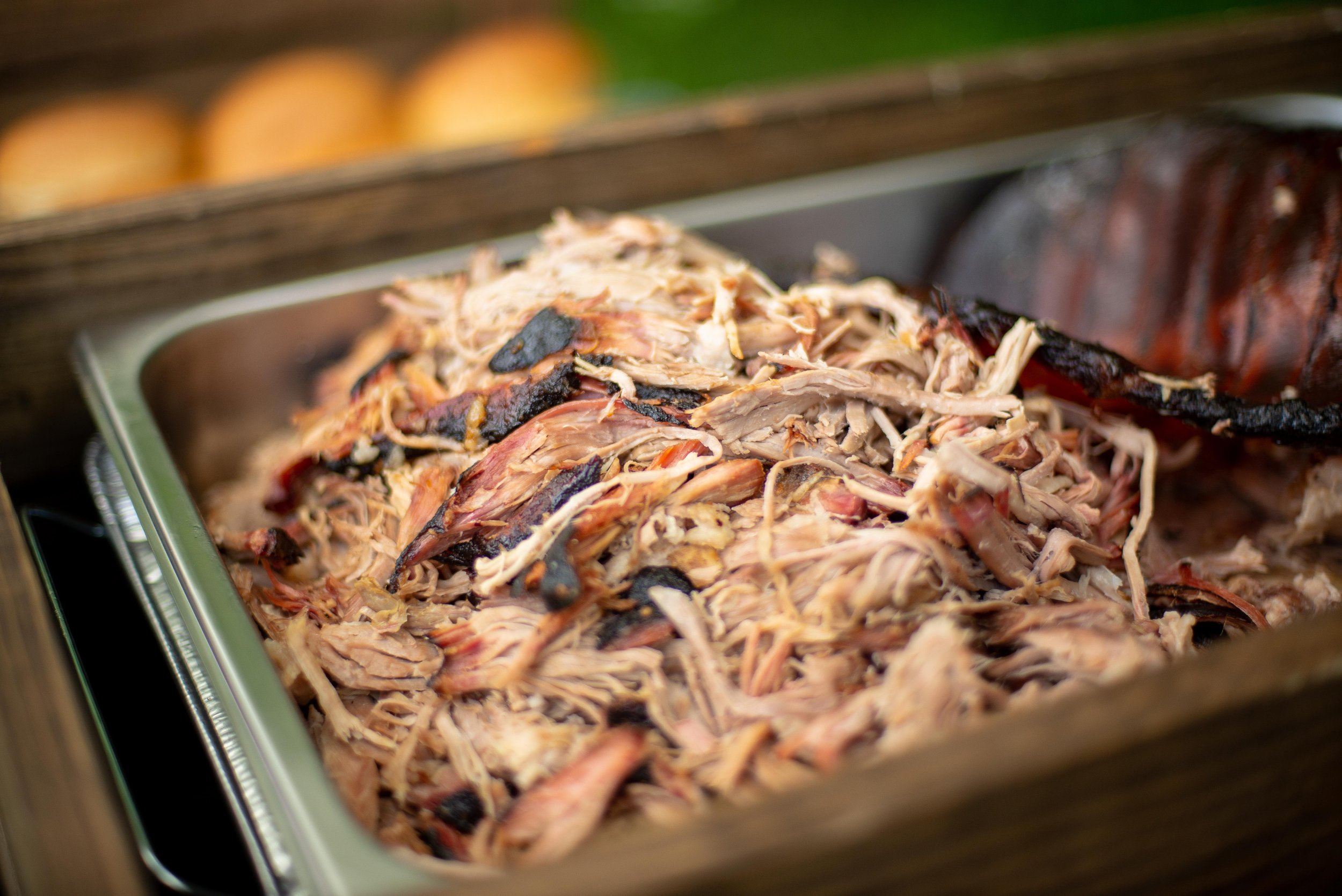Pit-Cooked Pork Shoulder
Excerpt from Life of Fire, Pat Martin
If you’re not ready to cook a whole hog, or just want to make some pulled pork sandwiches for a smaller crowd, barbecue pork shoulder is the way to go! If you’ve got a few more people coming over but don’t want to do a whole hog, you may as well throw on an extra shoulder, a few racks of ribs, or a couple chickens on there at the same time.
ingredients:
1/3 cup Diamond Crystal kosher salt or Big Hoss Rub
1 whole skin-on pork shoulder (18-20 pounds)
Vegetable oil, for the grates
method:
If possible, season the shoulder 1 day before you plan to cook it. Season it all over with a good, even coating of the salt, Transfer the pork to a wire rack set inside a sheet pan and refrigerate uncovered until ready to cook.
Build the pit, prepare the feeder fire, and fire the pit. if you dob’t have a custom grate for your pit, lay a regular grill grate across 3 or 4 bars placed close together and let it heat up as well. Wipe the grate down with vegetable oil. Place the shoulder on the grate, skin-side up. Close the cover and fire the pit as needed to maintain a temperature of 250 degrees.
After 6 hours, open the pit to flip the shoulder. Using heatproof gloves, carefully loosen any parts stuck to the grate, then flip the shoulder in one clean go.
Cover the pit and continue cooking the shoulder, maintaining a pit temperature of about 220 degrees. The shoulder should take about 20 hours to cook.
To check the doneness, look for the blade bone and wiggle it; if it seems loose enough to pull out with little to no resistance, the shoulder is ready. Texture is a better indicator of doneness than temperature, but you can also insert a meat thermometer into the thickest part of the shoulder. The meat is ready when it’s between 195-200 degrees.
Transfer the shoulder to a cutting board or clean work surface. You can pull the meat right away, but it’s best to let it rest for 30 minutes to an hour.
To pull the meat, put on heatproof gloves and remove the skin from the shoulder. Pull out the bones. Scape any unrendered fat from the underside pf the skin onto the meat. Dig your fingers into the meat and separate it into smaller chunks, then combine the meat with the fat, as if you were tossing a salad. The meat will be so tender that it’ll fall apart into large shreds between your fingers. Try not to pinch or squeeze out juice and fat; just gently break it apart. As you pull the meat apart, you’ll find a long, tenderloin-like muscle running through it. Competition barbecue folks call it the “dipstick” or “money muscle”, because it’s usually sliced and served to judges alongside the shoulder. You can do the same, or cut it into thirds and marry the meat with the rest of the shoulder.
Set the meat inside a baking dish or hotel pan and keep covered with plastic until you’re ready to serve; if you’re going to hold it for a while, place it in a cooler to keep warm.
Makes about 10 pounds of pulled pork (enough for 30-40 sandwiches)

